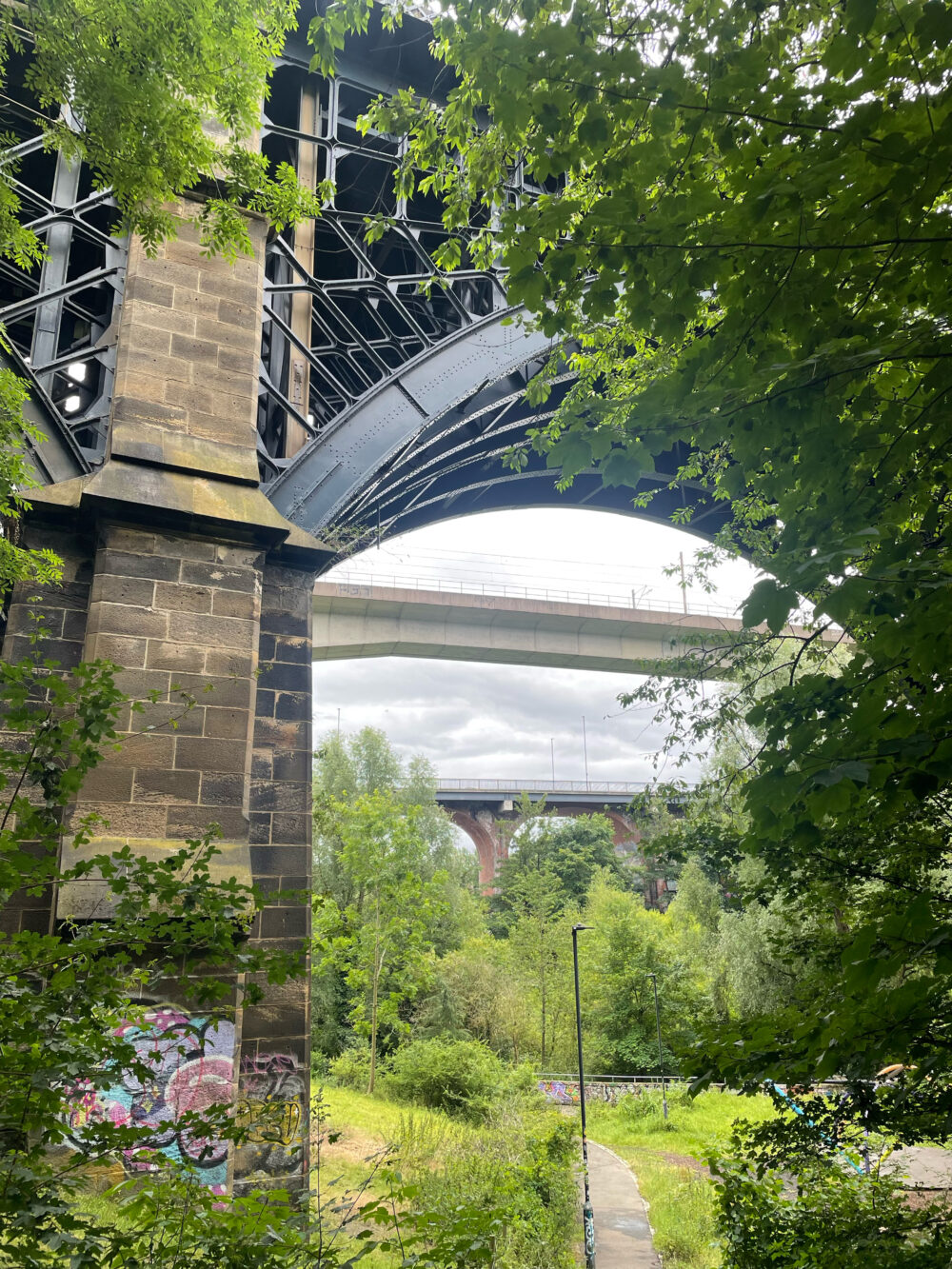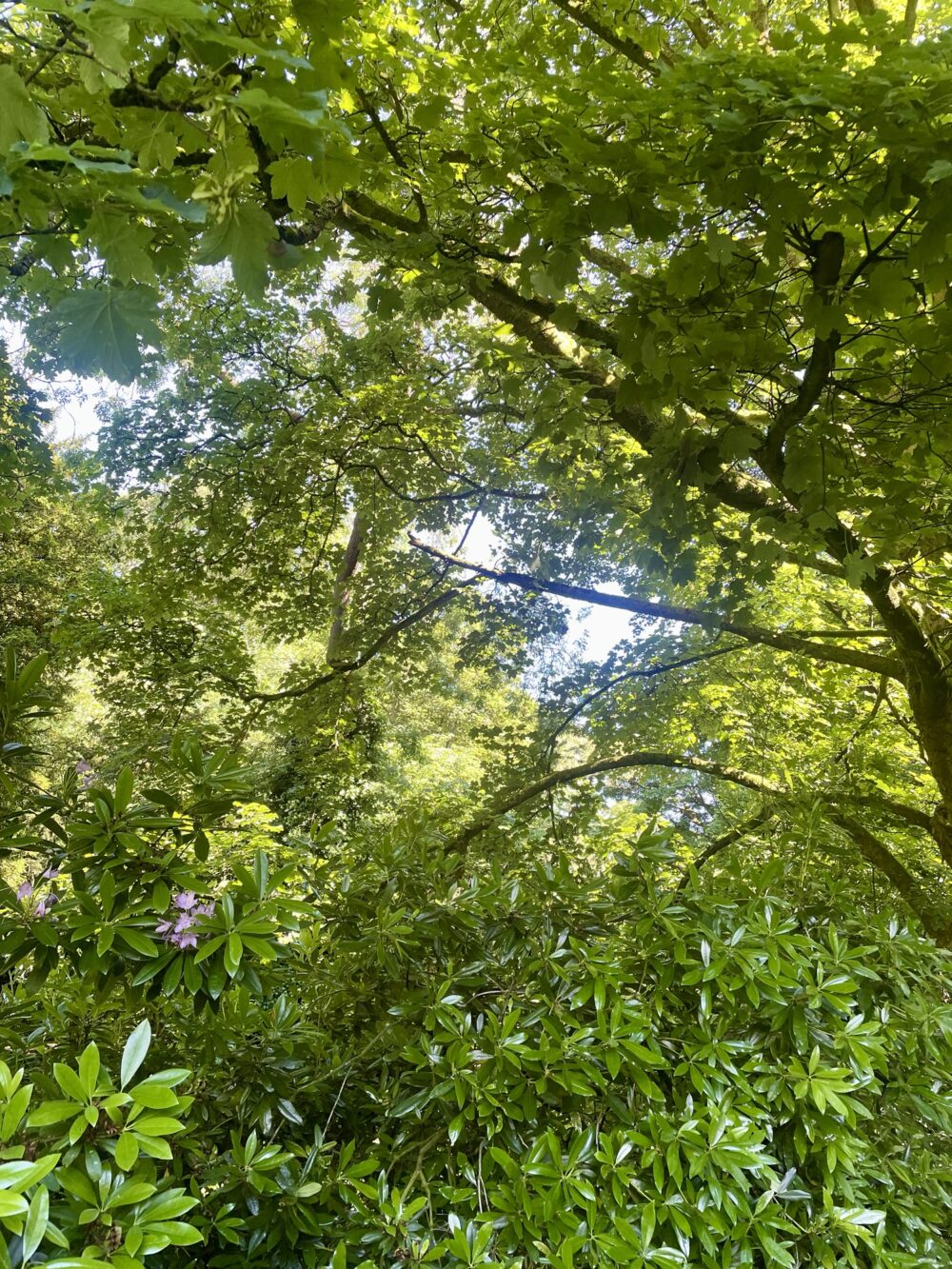Three bridges

Here are three bridges crossing the Ouseburn.
Nearest to the camera is the Ouseburn Viaduct, which carries the East Coast Mainline. It was built of timber in 1839, and rebuilt in iron thirty years later. When I took a photo of it twelve years ago, it was undergoing an extensive restoration.
Furthest from the camera is the 1878 Byker Bridge, originally a toll bridge—though the charge was removed in 1895. It carries the road now designated the A193.
In the middle is the newest of the three, Arup’s much-celebrated 1970s curving concrete Byker Viaduct, with joints glued together. It carries the Tyne & Wear Metro between Manors and Byker.
Though people assume he was born in Denmark, Arup’s founder, Ove Arup, was in fact born a stone’s throw from the bridge in Heaton. He was born in 1895: closer in time to the construction of the two preceding bridges than the one his firm designed. He had retired by the time the firm took on the Byker Viaduct project.
This post was filed under: Photos, Bridges, Newcastle upon Tyne, Ouseburn.








